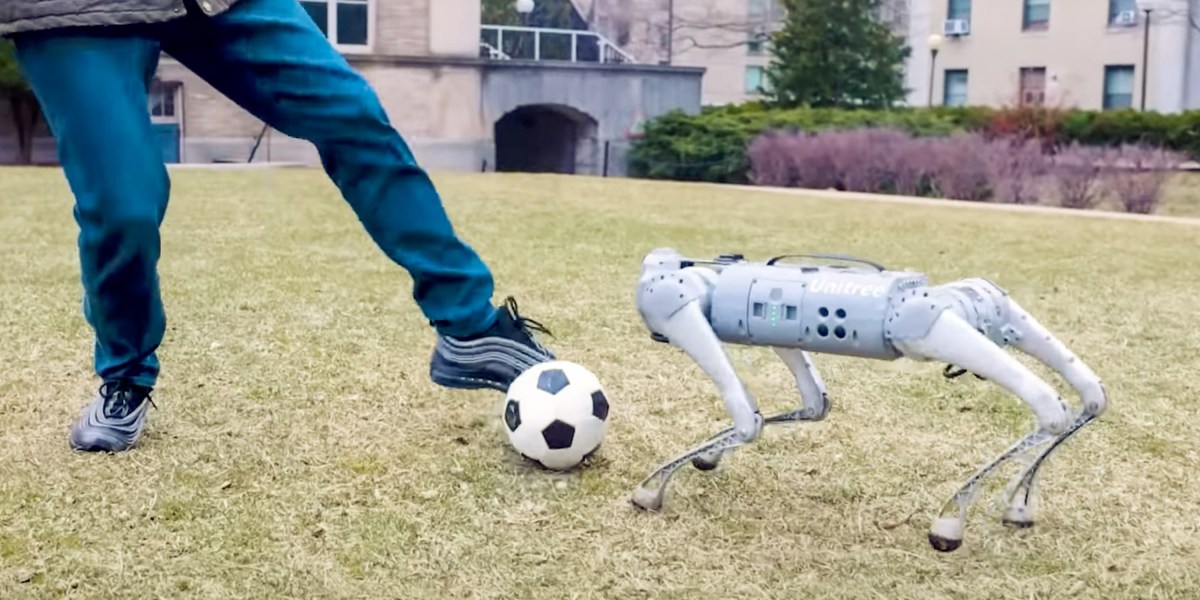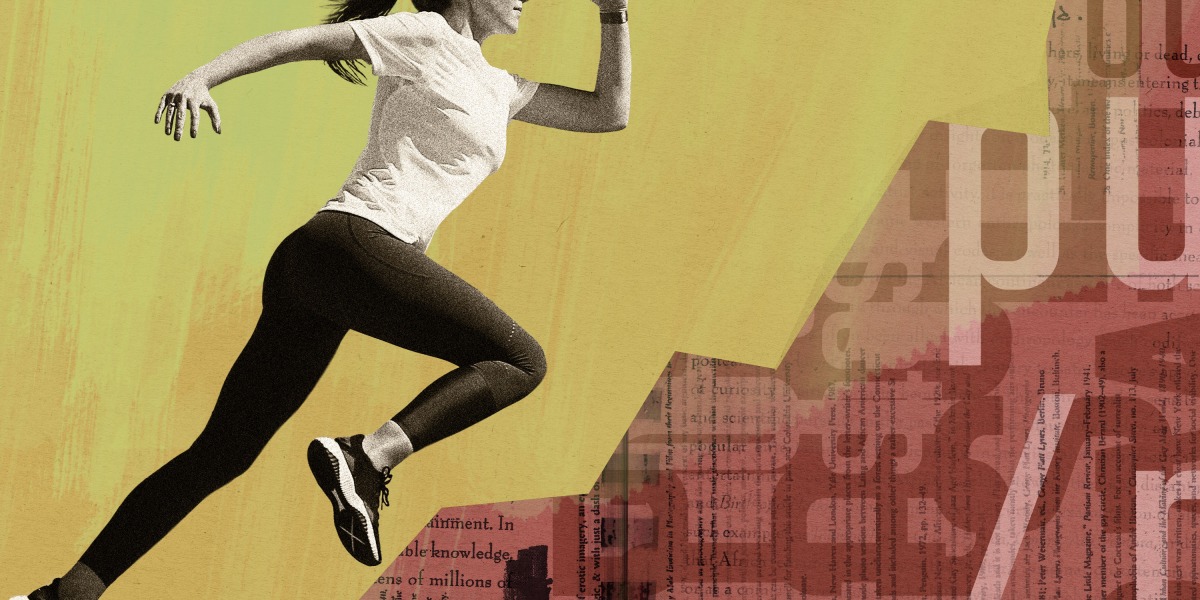Now playing: DribbleBot
It’s no Lionel Messi, but a four-legged robot developed at CSAIL’s Improbable Artificial Intelligence Lab can dribble a soccer ball on surfaces including grass, sand, gravel, mud, and snow.
To develop these hard-to-script skills, the researchers turned to a simulation—a digital twin of the natural world. “DribbleBot” started out with no idea how to dribble, but it learned through trial and error what sequence of forces it should apply with its legs. Four thousand versions of the robot could be simulated in parallel, vastly speeding the process.
“Over time it learns to get better and better at manipulating the soccer ball to match the desired velocity,” says MIT PhD student Gabe Margolis ’20, MEng ’21, who led the work along with research assistant Yandong Ji. Thanks to a recovery controller the team built into its system, the bot can also navigate unfamiliar terrain and recover from a fall. These skills could have applications far beyond soccer.
“Today, most robots are wheeled. But imagine that there’s a disaster scenario, flooding, or an earthquake, and we want robots to aid humans in the search-and-rescue process. We need the machines to go over terrains that aren’t flat, and wheeled robots can’t traverse those landscapes,” says Pulkit Agrawal, EECS professor and director of the Improbable AI Lab. Previous attempts to program soccer-playing robots have assumed flat, hard ground, and the bot wasn’t “trying to run and manipulate the ball simultaneously,” says Ji.
On the hardware side, the robot has sensors that let it perceive the environment, actuators that let it apply forces, and a computer “brain” that converts sensor data into actions—all in one compact, autonomous package.
“Our robot can go in the wild because it carries all its sensors, cameras, and [computing resources] on board,” Margolis says. The team’s next steps include teaching it new skills like handling slopes and stairs.




